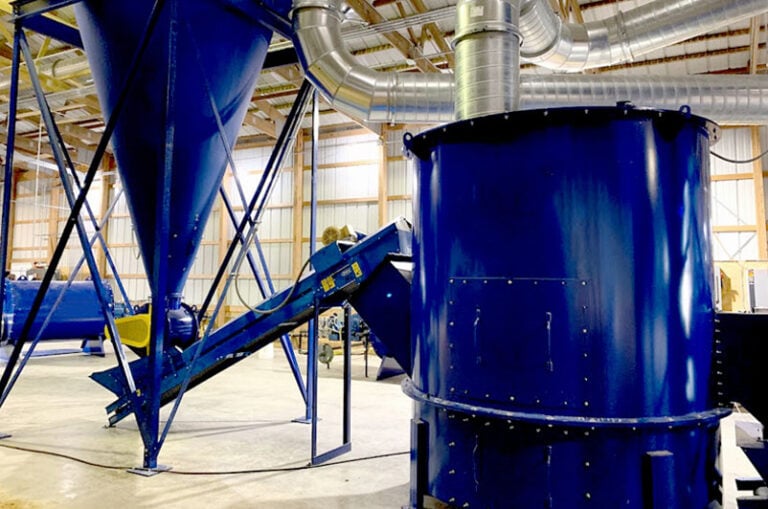A flexible and popular means of drying bulk solids, fluid bed dryers are often a top contender in the selection of an industrial drying system. And as with any industrial dryer, fluid bed dryers have inherent advantages and disadvantages that make them a better fit for some applications compared to others. Here’s a look at the key advantages and disadvantages these industrial dryers offer.
Fluid Bed Dryer Advantages
Fluid bed dryers are the preferred drying method of choice in a number of settings, thanks to the many benefits they can offer. Among them:
Small Footprint
Fluid bed dryers are significantly smaller in size compared to some other drying technologies, while still offering commercial production capacities. This makes them a great fit for facilities requiring lower throughput capacity, as well as those with limited space.
Efficient Drying
Thanks to the fluidization technique they employ, fluid bed dryers offer a high rate of heat transfer, making them an efficient option; fluidization allows air to surround each and every particle.
Gentle Handling
Compared to some other drying technologies, fluid bed dryers may offer more gentle material handling.
Low Cost
Perhaps one of the most common reasons for which fluid bed dryers are chosen is their comparably low cost. In addition to a low capital cost, their smaller size makes them more cost-effective to ship. Installation costs are lower as well.
Flexible in Application
Fluid bed dryers are capable of effectively drying a wide range of bulk solids, lending them to a multitude of processes, industries, and materials.
Mixing of Solids (CSTR)
Fluid bed dryers are considered a continuously stirred tank reactor, or CSTR, due to the fact that fluidization promotes a complete mixing of solids.
Simple Fabrication
While some industrial drying systems require significant machining and incredibly precise fabrication and welding, fluid bed dryers are much simpler. The lack of rotating components and changing loads means not as many forces are acting upon a fluid bed dryer during operation, so heavy-duty, precision construction is less of a concern.
This is not to say that fluid bed dryers are constructed poorly by any means; as with any industrial dryer, they require attention to detail in both design and construction to yield an efficient, reliable solution.
Easily Automated
Fluid bed dryers are particularly easy to automate. Again, the lack of moving parts offers an advantage, allowing for simple integration of pressure sensors and temperature probes for gathering process data.
Fluid Bed Dryer Disadvantages
While fluid bed dryers offer several advantages, they do come with a few disadvantages as well. Most notably:
No Energy Savings
Because a certain velocity of air is necessary to achieve minimum fluidization, the fluid bed dryer cannot be run at a lower velocity when processing reduced capacities like some other dryer types can. As such, despite running at a lower capacity, fluid bed dryers do not incur electrical energy savings.
Requires Feedstock Uniformity
Fluid bed dryers also require a very uniform feedstock. Any fluctuation in particle size, moisture content, or bulk density can present issues, making tight control over feedstock quality essential. This often means implementing one or more pretreatment methods to ensure uniformity.
Product Attrition & Dust Emissions
While fluid bed dryers are generally more gentle on the product, in some cases the material may experience some attrition and dust generation during fluidization, which could require additional measures in dust and air quality control. It may also make the fluid bed an unsuitable choice in some settings. FEECO recommends working with an expert to determine whether or not these issues would be applicable to a given drying project.
Conclusion
Fluid bed dryers offer an efficient approach to drying bulk solids, with many potential benefits, including improved heat transfer, gentle handling, and more. However, they do come with a few disadvantages as well, namely a lack of opportunity for electrical energy savings, the requirement for a uniform feedstock, and the potential for product attrition and dust emissions in some cases.
Experience unparalleled excellence in bulk solids drying equipment with FEECO. Our cutting-edge fluid bed dryers are meticulously engineered to meet your specific process and material objectives. For more information on our fluid bed dryers, contact us today!
Looking for more answers on our fluid bed dryers? Check out our FAQs!

